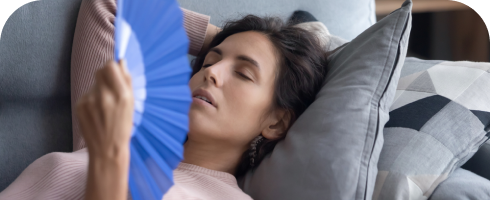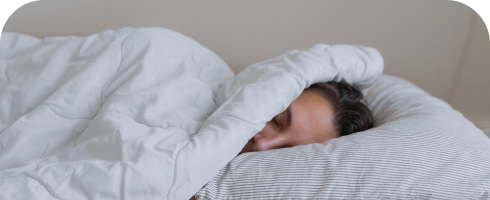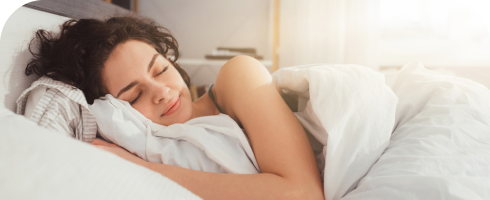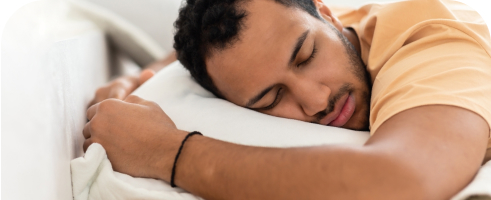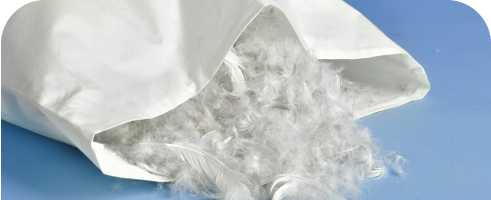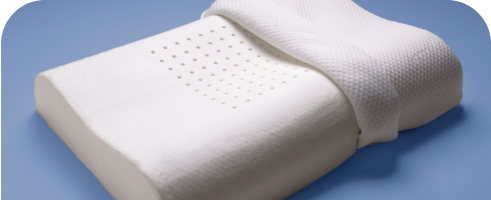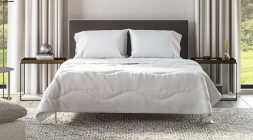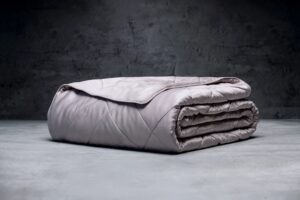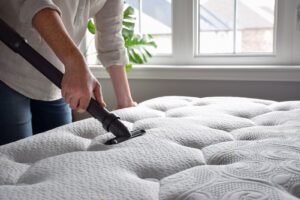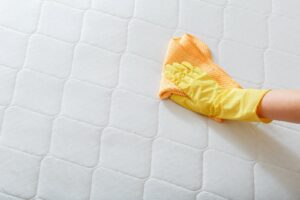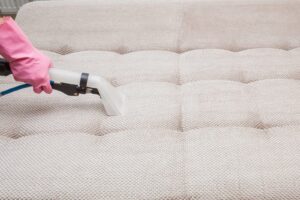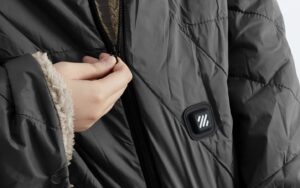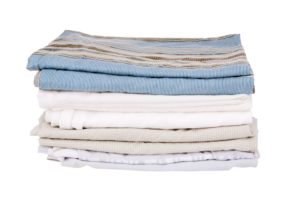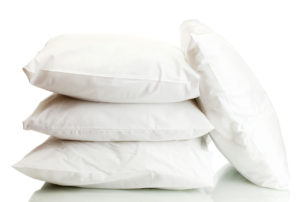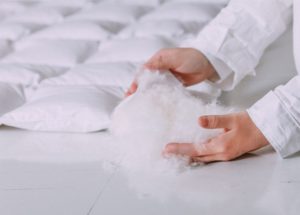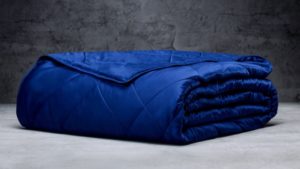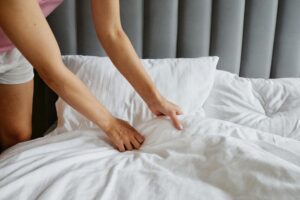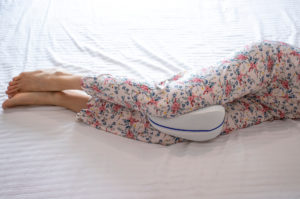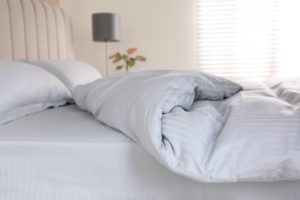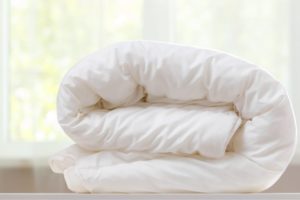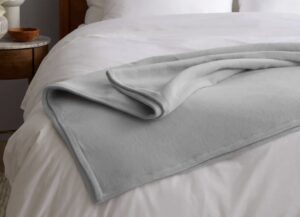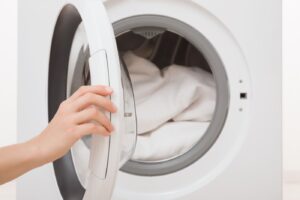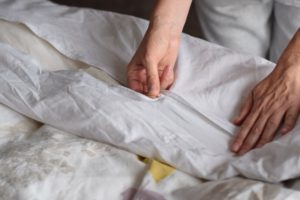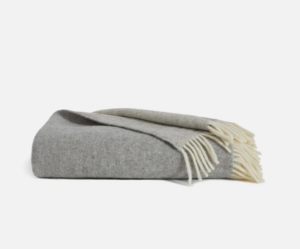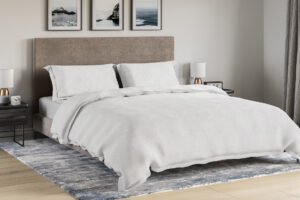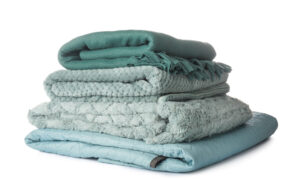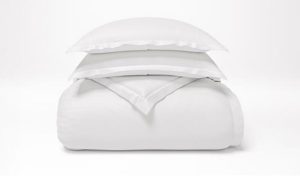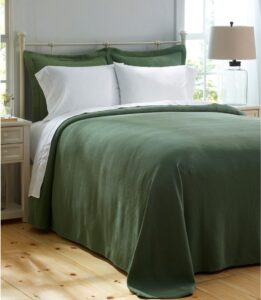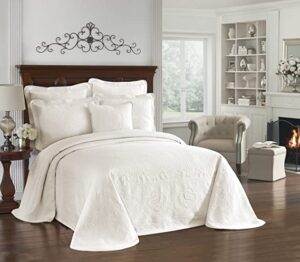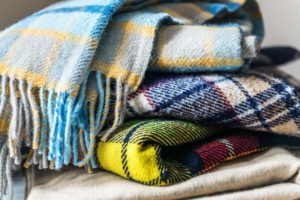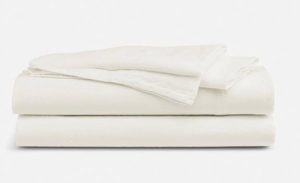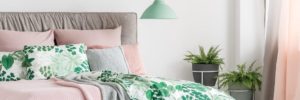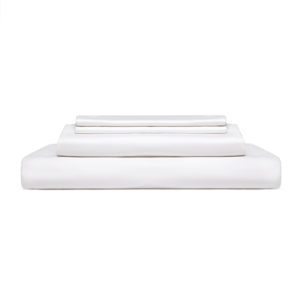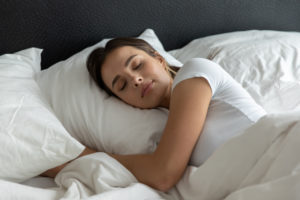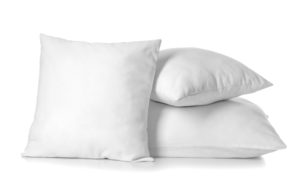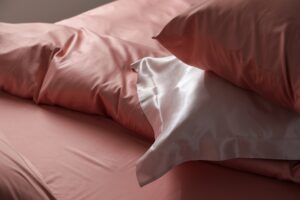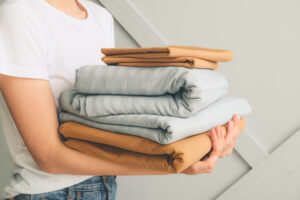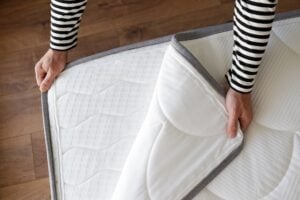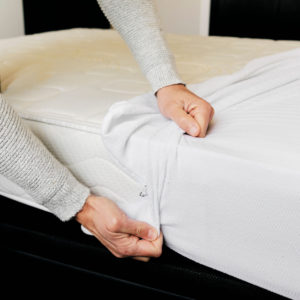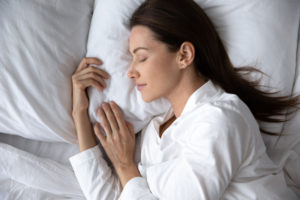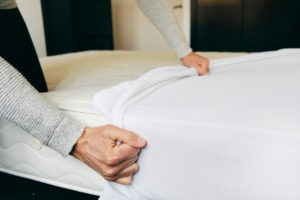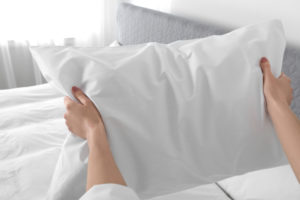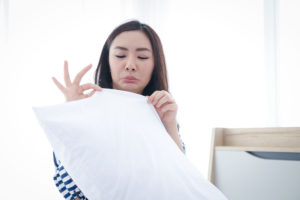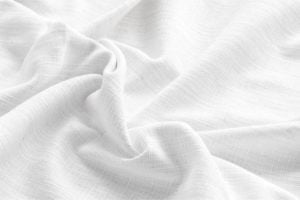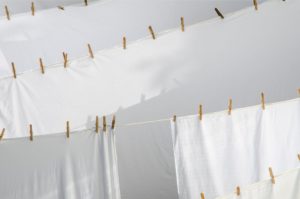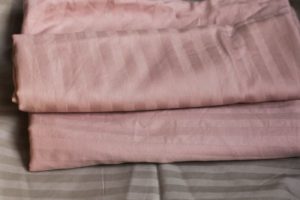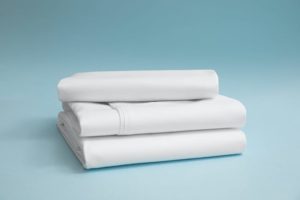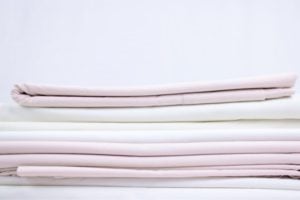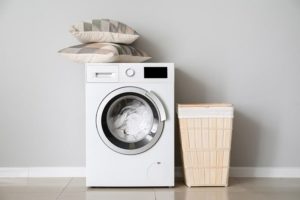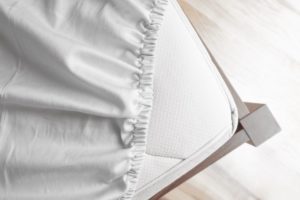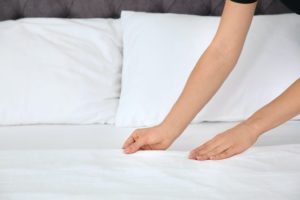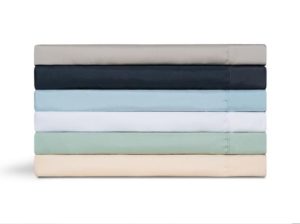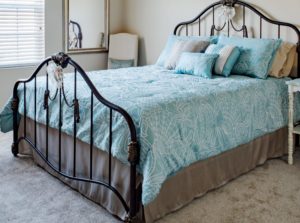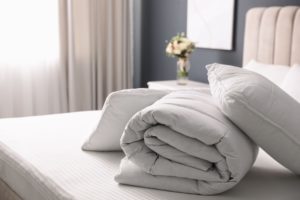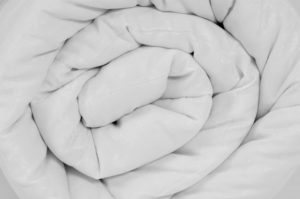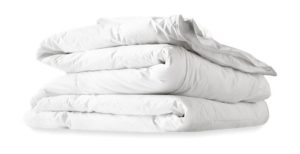Satin vs. Silk Pillowcase
Table of Contents
- Silk and satin pillowcases are popular for their luxuriously soft feel and a smoothness thought to promote skin and hair health.
- Although often confused for one another, silk is a natural fiber, while satin is a type of weave.
- Satin pillowcases can be made of silk, but non-silk satin is usually less expensive and easier to clean.
When choosing your bedding, don’t overlook your pillowcase because the right one can elevate the comfort of your sleep experience. Silk and satin pillowcases are popular because of their soft feel and attractive sheen. In addition, their smooth texture can promote skin and hair health.
Silk fabric is made from the cocoons of silkworms while satin is a type of weave that can be made with silk or other materials. Knowing the difference between satin and silk can help you choose between these two types of high-performance pillowcases.
Find a Pillow That’s Right for You
Looking for a new pillow? Take the quiz below to find the perfect pillow for your needs.
Trouble sleeping?
Answer these 5 easy questions to discover your perfect pillow

Trouble sleeping?
Answer these 5 easy questions to discover your perfect pillow
What position do you sleep in?

Side
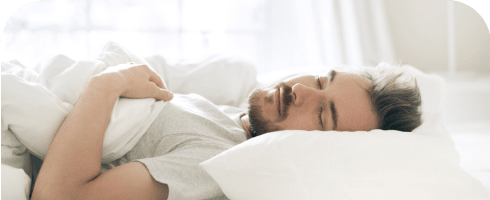
Back

Stomach
What Is Satin?
Many people don’t realize that satin is actually a type of weave and not a fabric. Satin was originally made exclusively from silk. Today, satin is often woven from synthetic fibers like nylon, polyester, and acetate. Satin can also be made with wool, silk blends, or with semi-synthetic fabrics like rayon.
Satin is one of the main types of fabric weaves. It is woven by placing four or more threads that run in the same direction over one thread that runs in a perpendicular direction. This weaving style gives satin its characteristic sheen, elegant drape, and soft feel.
Satin is often confused with sateen, which is actually a type of satin weave used with combed or carded cotton.
Benefits of Using a Satin Pillowcase
Satin pillowcases are soft and smooth, making them a good fit for people who want pillowcases with a luxurious feel. Satin can help reduce friction compared to other weaves, so satin is often preferred by people with sensitive skin and hair. For budget shoppers, satin pillowcases made from synthetic fibers tend to be less expensive and easier to care for than silk pillowcases.
Protects Skin
Satin weaves are known for their smoothness and softness, which can prevent scratchiness against the face and neck.
Gentle on Hair
Satin’s non-abrasive texture is thought to minimize hair breakage, which is great if you toss and turn at night or tend to go to sleep with wet hair. It also reduces frizzy hair since satin doesn’t produce a lot of static.
Feels Luxurious
Satin has a classic visual appeal that is stylish and elegant. When combined with its soft and lavish feel, a satin pillowcase can lend a sense of luxury to your bedroom.
Best Thread Count for a Satin Pillowcase
Thread count represents the number of threads woven into one square inch of fabric. It indicates how tightly woven a fabric is, which can be a good measure of its feel and performance. Sheets with higher thread counts are generally softer than those with lower thread counts.
That said, a higher thread count doesn’t always mean better quality. Workmanship, material quality, and the type of weave also contribute to a pillowcase’s suppleness and strength.
Shoppers should look for a pillowcase with a thread count between 200 and 400.
What Is Silk?
Originating in China, silk is a raw material harvested from silkworm cocoons. There are numerous varieties of silk, but mulberry silk is the most popular choice for sheets and pillowcases. Its uniform smoothness and soft, sleek feel make it a favorite among sleepers.
Silk pillowcases are valued for their purported skin and hair benefits. Silk’s texture is less likely to crease or irritate the skin, which can promote skin health. The lack of friction from silk also reduces hair breakage and frizziness.
Despite its suppleness, silk is exceptionally strong. Its long fibers are durable and hold up well to nightly use. Silk is also extremely breathable, making it comfortable for all-season use.
Benefits of Using a Silk Pillowcase
Silk pillowcases are comfortable and inviting thanks to their smoothness and softness. They are gentler on the skin and hair since they don’t create as much friction as coarser fabrics. Silk can also be a great choice for hot sleepers because it is breathable and moisture-wicking.
Keeps Hair Healthy
Silk doesn’t snag or pull hair like coarser materials. Reduced friction means less frizziness and potentially less hair damage and loss. Silk is less apt to draw out oils from hair, which can keep hair from becoming dried out or brittle.
Regulates Temperature
Silk is exceptionally breathable as it naturally wicks away heat and moisture. Its temperature control makes silk bedding a top choice during the summer months. Hot sleepers tend to find silk pillowcases cool to the touch.
Feels Luxurious
Many sleepers enjoy the buttery, ultra-smooth texture of silk pillowcases. Silk’s appealing sheen, natural drape, and soft feel make silk pillowcases feel more luxurious than most other types of pillowcases.
Best Thread Count for a Silk Pillowcase
Silk is not usually evaluated based on its threat count. Instead, silk quality is often gauged by a weight-based measurement known as momme. Similar to thread count, a higher momme measurement is typically indicative of greater density and quality. An ideal momme range for silk is 19 to 25.
Silk quality is also measured by the grade of its individual silk threads, which ranges from A to F. Grade A silk is considered first-rate and is further divided into grades 2A to 6A. Luxury silk sheets are usually grade A, with 6A being the most premium.
Which Should You Consider?
While satin and silk pillowcases share many overlapping features, they also have distinguishing qualities. Weighing your preferences against the advantages of each can help you choose the most suitable pillowcase.
Satin and silk pillowcases both have a supple texture that can promote skin and hair health. As a natural fiber, silk is typically more breathable than satin made with synthetic materials. Hot sleepers may therefore prefer the superior temperature control of silk pillowcases. However, silk commands a higher price-point because of its natural sourcing and luxury reputation. Silk also demands more delicate washing. Satin pillowcases made with other materials are a better alternative for budget-conscious shoppers who want silk-like performance with easier maintenance.
| Satin Pillowcase | Silk Pillowcase | |
|---|---|---|
| Go For It If… |
|
|
| It’s Not a Match If… |
|
|

Still have questions? Ask our community!
Join our Sleep Care Community — a trusted hub of sleep health professionals, product specialists, and people just like you. Whether you need expert sleep advice for your insomnia or you’re searching for the perfect mattress, we’ve got you covered. Get personalized guidance from the experts who know sleep best.

